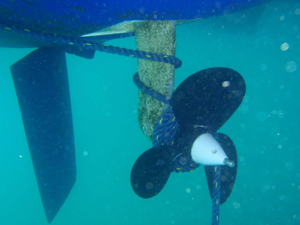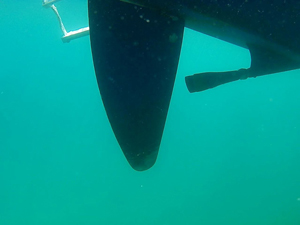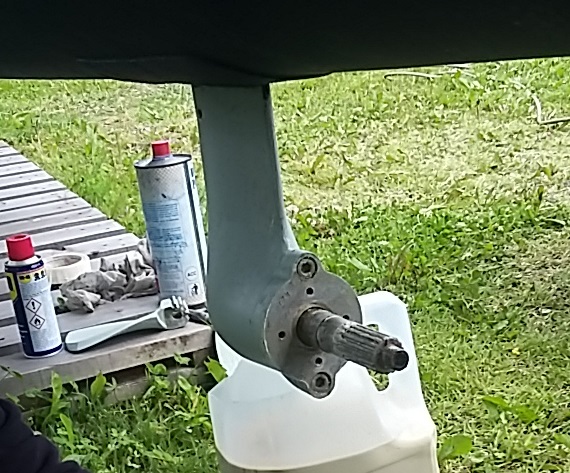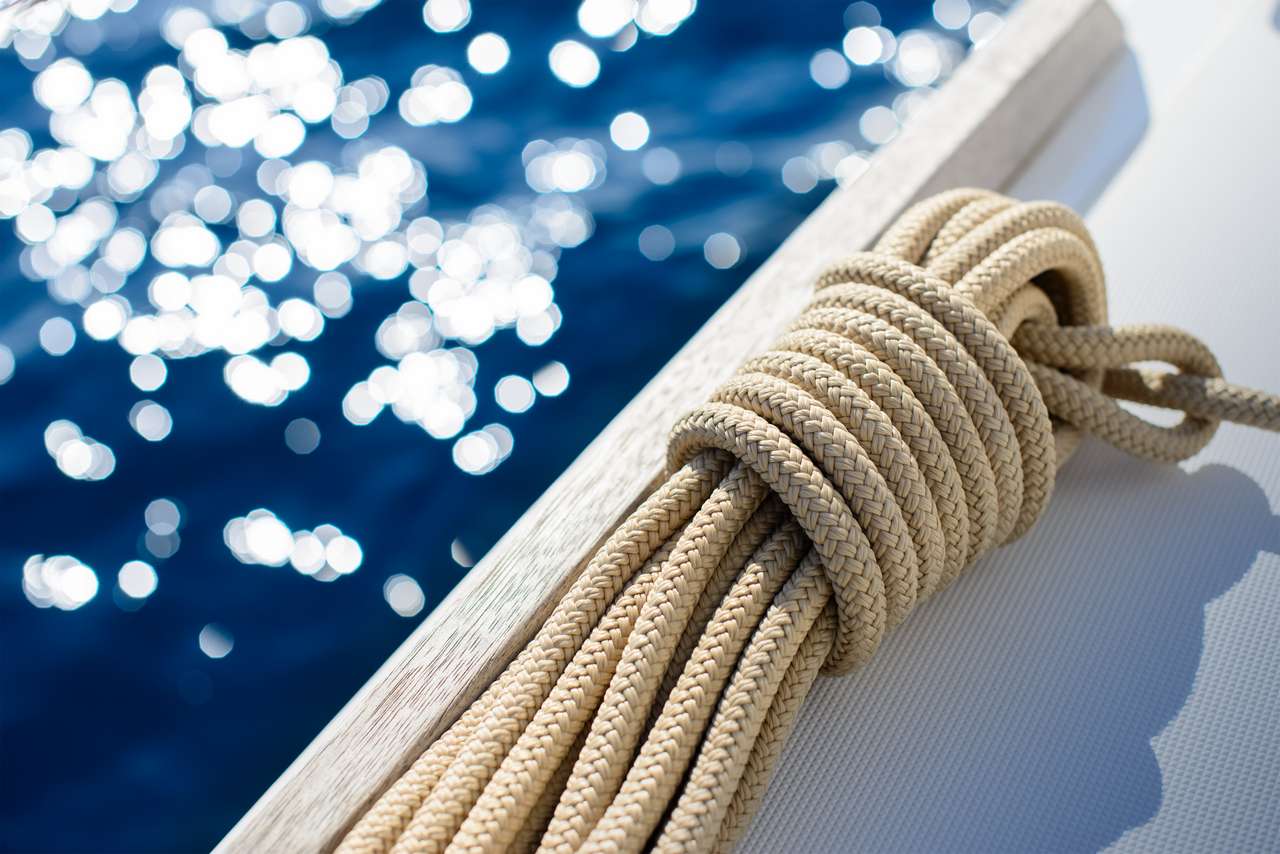When a rope, or worse, a fishing net doesn't come round the propeller of your boat, you will have to try to resolve one of the most serious failures you might face at sea. Imagine what could happen if this problem occurred during entry into port or while you are about to overcome breakdowns, you risk to remain without engine propulsion at the worst time, with all the consequences of the case. In fact, foreign bodies tangled with force on the propeller will block the axis and blades with the possibility of causing serious problems to the engine and put at risk the safety of boat and crew.
Unfortunately, this problem can occur both during manoeuvres, during mooring or in the open sea, where unfortunately residues of old nets, ropes, plastic bags and other rubbish are increasingly the cause of accidents. If you were to hear the engine speed decrease or some abnormal vibration, there could be just a rope stukked in the engine propeller.
At the moment of the tangle of the rope on the engine the boat will slow down until it stops automatically, in a few moments the engine will shut down by itself. In case the engine does not turn off on its own we recommend to remove the gear and gas as soon as possible. Sometimes, if we are lucky, inserting for a few moments the reverse gear inserting we will be able to free the propeller (especially in case of plastic bags and not too big ropes), but this operation must be performed with extreme caution. If the problem isn't resolved, it is better to turn off the engine and verify the problem in detail.
Examples of the rope wound in the propeller in a catamaran and on a boat with propulsion in line of axis:


What should we do in this case?
If this happens in port waters during berthing:
As suggested, immediately remove march and gas and try as far as possible to secure boat and crew. This operation will be faster and more effective the more you have prepared the boat for the maneuver of mooring: a good number of fenders, a correct arrangement, Some rope of respect laid correctly will help solve the emergency of having lost the engine in maneuver. The assistance with the dinghy by the moorers of the port can be valuable. Once secured and moored the boat, we recommend to contact the assistance of the marina to intervene a technician diving. In most cases, it is forbidden to dive with or without self-contained breathing apparatus to carry out activities and/or interventions of any nature and exclusion of professionally qualified personnel, entered in the records kept by the maritime authority and authorised by the port management. Not to mention that often the waters in the harbor are not exactly crystalline.
If the incident should occur near the mouth of a port, the best solution will be to hoist the sails quickly and do everything possible to head towards the open sea. Again, we recommend that you call the Navy which will provide the necessary assistance.
If it happens in the open sea or in places where you can dive:
Also in this case, immediately remove the march and gas and try as much as possible to secure boat and crew, are the first thing to do. This operation can be complicated in case of bad weather condition or if we are sailing near the coast.
Once in safety, we can try to solve the problem by diving into the water. However, the operation of removing the lines and ropes around the propeller for diving is recommended only in good weather conditions and especially after verifying that the wave motion allows you to perform the maneuver safely and there is no excessive pitch of the boat. In case of rough seas, the operation becomes very risky.The foot of the crankshaft, the axle or the propeller itself, which causes the hull to wince, may in fact hit you in the body or worse in the head, causing serious injuries.
It is therefore a good idea to always have on board the material necessary to carry out small diving activities such as fins, mask, snorkel and equipment suitable for boat maintenance.
Finally, it is advisable to have a diving suit in case the failure should occur in winter and consequently in too cold waters to be able to immerse naked body. The wetsuit and a pair of gloves will also protect you from any microorganisms and shells present on the propeller and hull that can be extremely sharp.
Regardless of whether you have managed to free the propeller yourself or with the help of a professional, it is a good rule to subsequently check:
- The good condition of the rubber seal of the propeller. It may happen that the top is wrapped on the axis and then is sucked by the gasket that will inevitably ruin itself. In this case it will be necessary the intervention of a mechanic.
- Unfortunately, if the engine struggled a lot, the damage could be serious. The alignment of the axle, the integrity and alignment of the axle support and also the engine silent blocks shall be checked.
- Beware of fishing wire: it tends to wrap on the axis, it will be removed with care.








